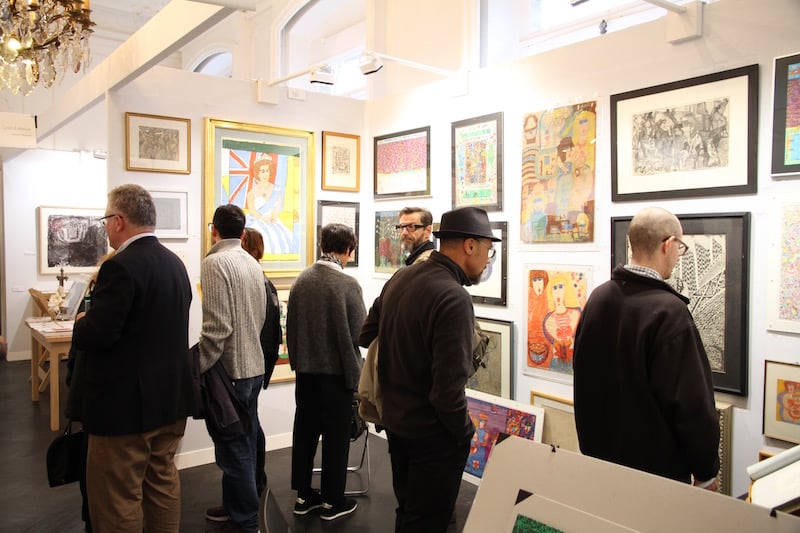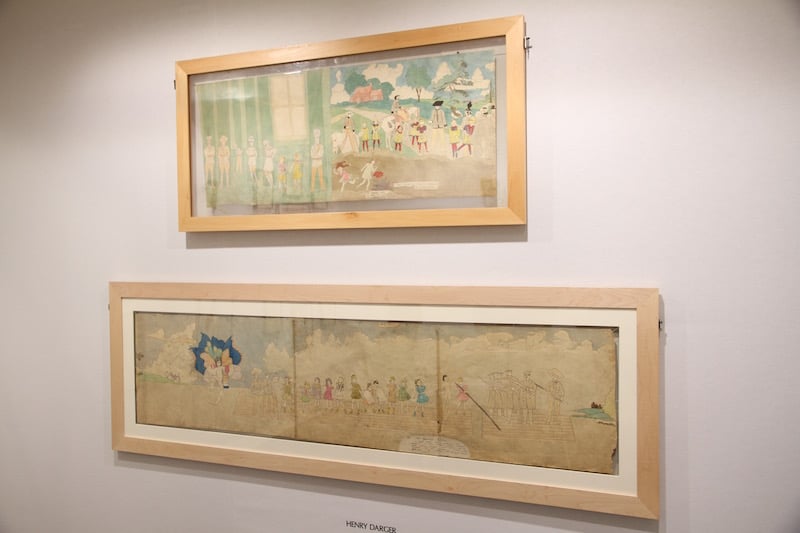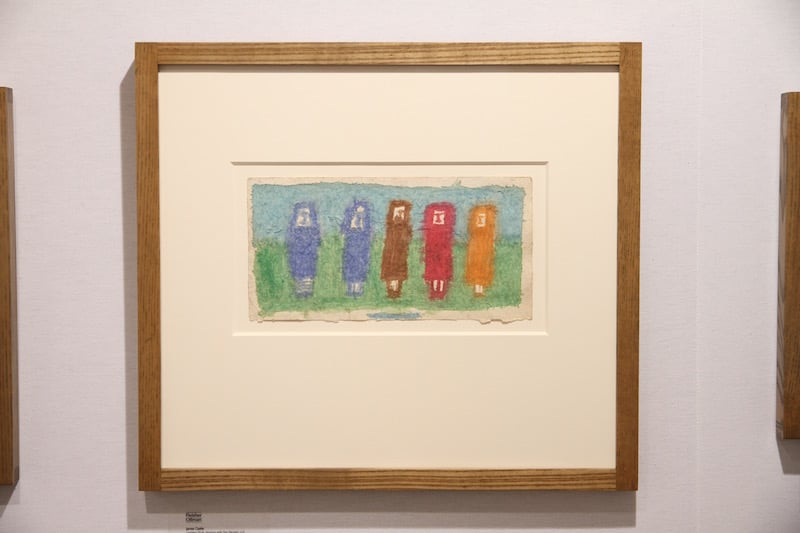Art Fairs
Paris’ Outsider Art Fair Attracts a Dedicated and Growing Collector Base
Interest in outsider art is bigger than ever.

Interest in outsider art is bigger than ever.

Henri Neuendorf


The fair took place in the Hotel Duc, in central Paris.
Photo: Henri Neuendorf.
Away from the buzz around FIAC at Paris’ Grand Palais the Outsider Art Fair attracted a small yet dedicated contingent of collectors. The fair included 38 exhibitors.
Andrew Edlin, founder of the Outsider Art Fair and owner of an eponymous gallery in New York told artnet News that Jean Dubuffet, the originator of the art brut designation, was “championing artists he was finding in mental hospitals, prisons, places where there were artists that didn’t even consider themselves artists.” Edlin continued, “He felt because they were making art outside of the confines of the academic and commercial art world that their work was more pure or authentic.”

Drawings by Henry Darger at Carl Hammer Gallery, Chicago.
Photo: Henri Neuendorf.
The most popular artists of the genre include Bill Traylor, an illiterate former slave from Montgomery, Alabama who started drawing at the age of 85, and Henry Darger, a reclusive hospital janitor from Chicago with no formal training.
“These artists are visionaries; no teaching influenced them,” Yolanda Farias of Carl Hammer Gallery told artnet News. “The outsider community is very small, but they’re become more well known. In the last 10 years the contemporary market has accepted these artists, and a lot of the artists have crossed over now.” Farias added that last December, Christie’s Paris sold a work on paper by Darger for €601,500 ($745,000).
Librairie Galerie Nicaise showed works by André Robillard, an 84-year-old French artist who’s been in a mental hospital since the age of 14. He was discovered by Dubuffet and is celebrated as—or fetishized for being—the last surviving outsider artist discovered by the genre’s originator.

Works by André Robillard at Nicaisse, Paris.
Photo: Henri Neuendorf.
“Nearly everything is sold,” Antoine Hyvernaud told artnet News, gesturing towards the wall, which is covered crude weapons constructed from found objects with prices ranging from €1,000 to €20,000.
“These are very important pieces,” Hyvernaud said. He couldn’t help but add, “they were included in a retrospective about Robillard at the Musée de Art Brut in Lausanne,” which is the premiere museum for outsider art.

Works by André Robillard at Nicaisse, Paris.
Photo: Henri Neuendorf.
Fleisher/Ollman Gallery of Philadelphia showed intricate collages by Felipe Jesus Consalvos, a Cuban-American cigar factory worker whose work wasn’t discovered until after his death; drawings by Scottie Wilson, an English shopkeeper, and landscapes by Joseph Yoakum, who worked at a circus.

Drawing by James Castle at Fleisher Ollman, Philadelphia.
Photo: Henri Neuendorf.
Some of the most impressive works at the fair are by James Castle, a deaf and illiterate illustrator from Idaho who used unconventional mediums such as soot and spit on paper. His works are included in the collections of the Reina Sofia Museum in Madrid and the Philadelphia Museum of Art. The gallery offered the works between $10,000 and $30,000.
Claire Iltis, associate director of Fleisher/Ollman, said that there was great interest from a broad range of collectors. Massimiliano Gioni’s inclusion of outsider art at the 2013 Venice Biennial greatly increased interest in the genre, she told artnet News.
However she added “There’s a sensitivity dealers need to have when dealing with this work,” Iltis said, explaining that there’s a risk of exploiting the artist’s lack of formal training in the discussion of their work.
“We represent work that we think has intrinsic value as art, whether it’s been made by artists with or without formal education, and with or without intellectual disabilities. We try to avoid making the discussion about the art all about the artist’s condition,” she explained.
Galerie du Marché in Lausanne reported strong sales, via works by Louis Soutter and Aloïse, among others, says gallery representative Jean-David Mermod. Museums in Portugal, France and Switzerland are responsible for a bulk of the sales.

Lots of interest at the booth of Galerie du Marché, Lausanne
Photo: Henri Neuendorf.
He explained that he met several new collectors of all ages and from all walks of life at the fair. “Here you can still buy a masterpiece for €100,000,” he said. “There is no other genre where you can do that.”